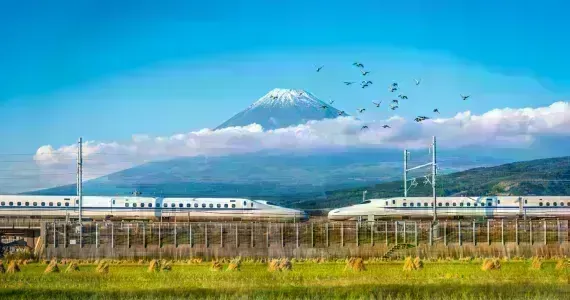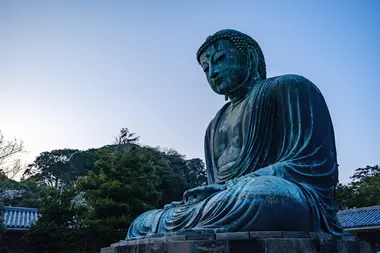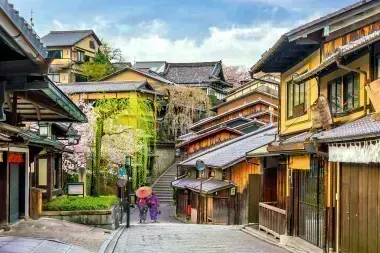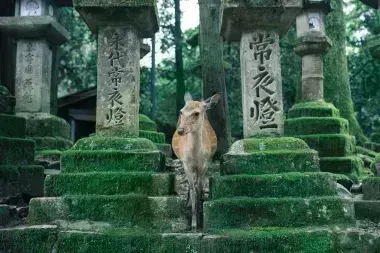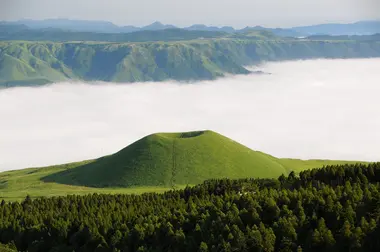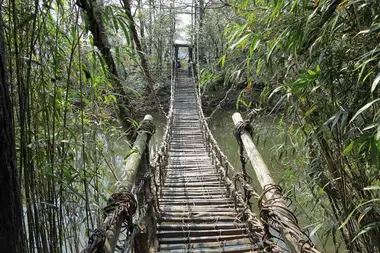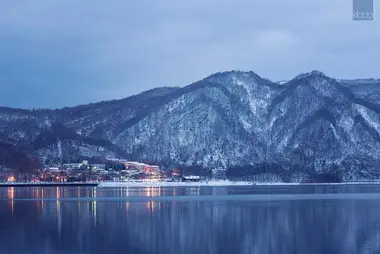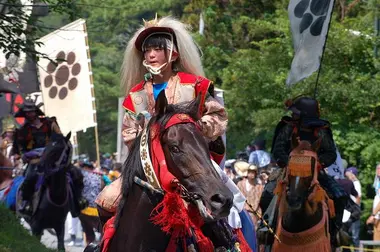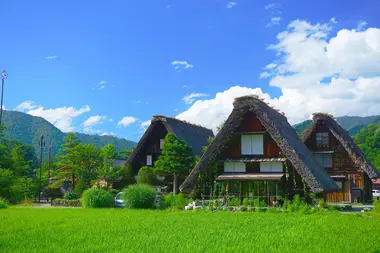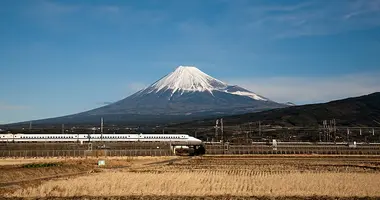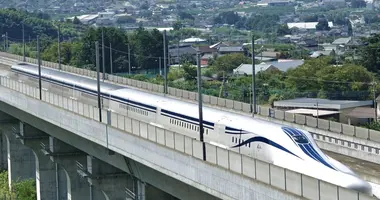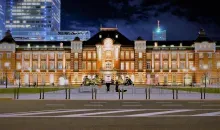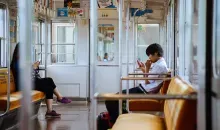How many places can you see on your trip to Japan? The must-sees
A first trip to Japan is always exciting, and travelers always want to see as much as possible. And with good reason: this great trip to the other side of the world may be the only one you ever make in this country. So it's important to try and see as much as possible once you're there.
Japan is a culturally rich country, offering a wide range of attractions and experiences. The number of things you can see and experience on a trip to Japan can vary greatly depending on several factors, including the length of your trip, your interests, your itinerary and the way you get around .
- Itinerary:
Your itinerary will determine where you go and what you see. Japan offers a mix of modern and traditional attractions. Whether you focus on bustling cities like Tokyo and Osaka, the historic sites of Kyoto and Nara, or the natural beauty of Hokkaido, the Japanese Alps or Kyushu, your interests will determine your itinerary. - Travel schedule :
The pace at which you travel will also affect how much you can see. If you prefer a leisurely pace, with plenty of time for exploration and relaxation, you will, logically enough, visit fewer places. A faster pace will ensure you cover more sites. However, it's important to find the right balance to enjoy the country without burning yourself out! - Public transport
Your choice of transport, and the time you spend on it, is crucial to your trip. The shorter your stay, the less time you can afford to spend on public transport. You'll need to get around quickly. The most recommended option is the train! Japan's rail network is highly developed and renowned for its speed, punctuality and efficiency. So you can visit the whole country quickly and easily.
Tips from the team :
- To get the most out of your trip, we advise you to buy your tickets in advance. Additionally, the Japan Rail Pass is an excellent way to make your travel easier and faster. It gives you access to the entire JR train network without a reservation! Take the first train that comes along, and off you go! And if you miss your train, don't worry, just catch the next one at no extra cost.
- To make the most of your time on site and limit the need to travel too far, opt for full-day (or half-day) getaways in places close to where you live! For example, if you're staying in Kyoto, you can take no fewer than 5 excursions that are 1 hour or less by train!
- Finally, be sure to organize your visits according to their geographical location. If you're visiting one area, make sure you take in all the attractions before moving on to another. This will save you time-consuming roundtrips.
Discover the Japan Rail Pass for your travels!
How many places can I visit in 7 days?
Seven days is a rather short time to visit a country like Japan, but it can be done! As we saw above, all you need to do is make your choices according to your preferences and organize your travel. This doesn't mean, however, that you absolutely have to
If you want to get a taste of Japan's cultural richness (and especially for a first trip), you can't miss Tokyo and Kyoto! We advise you to spend at least 3 days in each of these two cities, and to add one or two excursions to your stay, especially to Kyoto! This way, you can visit 4 or 5 cities of your choice. If you really want to push on to the south of Japan and discover Hiroshima and its famous torii in the water on the island of Miyajima.
The must-sees in 7 days!
- Examples of possible itineraries:
- Tokyo, Kyoto, then excursion from Kyoto to: Osaka or Kobe, Nara (+Uji for example) (3,2,1,1)
- Tokyo, Kyoto, then excursion from Kyoto to Himeji (+Kobe / half-day), Nara (+Uji for example) (3,2,1,1)
- Tokyo including excursion to Hakone/Mont Fuji, Kyoto then excursion to Nara (+Uji for example) (3,1,2,1)
- Tokyo, Kyoto, Hiroshima, Miyajima (3,2,2)
- Tokyo, Kyoto, then excursion from Kyoto to: Osaka or Kobe, Nara (+Uji for example) (3,2,1,1)
What places can I see in these cities?
We've put together a non-exhaustive list of all the places you can visit when you're in the big cities, as well as the excursions you can make on the Golden Route!
- Tokyo: The capital is obviously a must-see destination on your trip to Japan! You can visit the Imperial Palace and its Japanese gardens, the traditional Asakusa district with its famous Senso-ji temple and the Nakamise-dori shopping alley, the Shinjuku and Shibuya districts, Tokyo's nerve center, the Harajuku district, temple of fashion and its unmissable Takeshita Street, as well as the Akihabara district, the electronics district. And don't forget to take a stroll in one of the many parks, such as Meiji or Shinjuku, for a breath of fresh air, or visit one of the many museums!
To find out more about what to do in Tokyo, go to here
Excursions: Kamakura and the Enoshima peninsula are less than an hour away by train. Mount Fuji and the entire Hakone/Kawaguchiko region are also nearby.
- Kamakura : If you want to take a refreshing dip in the sea during your stay in Tokyo, Kamakura and the Enoshima peninsula are the best places to do it! You can also see the Great Buddha of Kamakura (Daibutsu), the Hase-dera, Tsurugaoka Hachiman-gu and Kotoku-in temples, the Zeniarai Benten shrine and the Hokoku-ji bamboo forest!
- Hakone and Mount Fuji: Mount Fuji is a must-do if you're staying near Tokyo. You can try the excursion and climb this sacred place, or enjoy the view by heading to the town of Hakone. You can visit Ōwakudani's Valley of the Underworld, which gives you a relentless view of Mount Fuji and the surrounding nature with the Hakone Ropeway cable car. At the foot, you can visit Lake Ashi, the Hakone-jinja shrine, the Hakone open-air museum, as well as the Pola art museum. You can also enjoy a bit of nature with the Sengokuhara bamboo forest and Fuji-Hakone-Izu National Park . Last but not least, the region's must-sees are the onsens, or hot springs
- Kyoto: Japan's ancient capital is a must on your trip to discover the myriad landscapes and atmospheres you'll encounter in Japan! Historically and culturally very rich, discover numerous temples and sanctuaries such as : Kinkaku-ji temple (the Golden Pavilion), Ginkaku-ji temple (the Silver Pavilion), Kiyomizu-dera temple, the historic geisha district of Gion, the Fushimi Inari Taisha shrine overlooking Kyoto, the Arashiyama district with its bamboo forest and monkey mountain, Nijo castle, or the delicious Nishiki market!
Excursions: The pretty village of Uji is 20 minutes away by public transport, the city of Nara is only half an hour away by train and is easily accessible from Kyoto, as is the city of Osaka! A little further afield, you can head to the city of Kobe, less than an hour away, a good opportunity to try a good piece of beef. Himeji, with its emblematic castle, is also less than an hour away by Shinkansen train.
- Osaka: The third largest city in Japan, Osaka offers a wide range of activities and points of interest, including Osaka Castle, the Dotonbori district, the heart of Osaka entertainment, the Kuromon Ichiba market, the Shinsekai district with its undeniably retro charm, the famous Kaiyukan aquarium, the Shitenno-ji temple, one of the oldest in Japan, the Umeda district, or Universal Studios Japan!
Check out this link to see more things to do in Osaka!
- Nara: If you're in Kyoto, the city of Nara is just a 30-minute train ride away! An ideal half-day excursion! Known for its Nara Koen deer park, Nara is also famous for its Todai-ji (the great bronze Buddha), its Kofukuji temple water pagoda, its Sariwasa pond and, last but not least, for the Katsuga shrine.
How many places can I visit in 15 days?
Two weeks is the minimum recommended time to make the most of your trip to Japan. You'll have the opportunity to move around the country, while taking a little more time to discover each place of interest. For this period, we recommend two types of itinerary:
- The extended Golden Route:
Here you can opt for an extended golden route, allowing you to explore more of the country's cultural and geographical diversity. In addition to the golden route we've presented for the 7-day itinerary, you can extend your journey southwest to Fukuoka on Kyushu Island, or northwest to Kanazawa.- Tokyo, Kyoto, Osaka, Okayama, Naoshima and Teshima islands, Himeji, Hiroshima, Miyajima island, and Fukuoka (south-west route)
- Tokyo, Kanazawa, Shirakawa-go, Kyoto, Osaka, Hiroshima and Miyajima Island.
For this type of itinerary, the JRPass will come in very handy, if not indispensable! The more you travel around the country, the more sense the Japan Rail pass makes. It frees you from all train reservations, allowing you to travel flexibly whenever you want. It will also quickly pay for itself.
Find out here if your itinerary requires a JRPass: link
- Major cities & regions
The second option is to visit a handful of cities, such as the Japanese capital, Kyoto, and explore a region of Japan. This option is ideal for first-time travelers in particular. It will allow them to delve deeper into Japanese culture and experience life in Japan's more secretive regions. Ideal for travelers who want to get off the beaten track!
Some examples of regions to visit:- Kyushû
- Shikoku
- West coast
- Hokkaido
If you opt for this type of trip, don't forget the regional Japan Rail Pass! They give you unlimited access to a whole region of Japan!
Discover the regional JRPass!
What places can I see in these regions? The must-sees in 14 days
- Kyushu: Japan's Kyushu region is an attractive destination for travelers due to its geographical diversity, rich culture, historical attractions and delicious cuisine! It's also known as "The Volcano Route". Discover Fukuoka, the capital, Nagasaki and its history, as well as the island of Dejima, a former Dutch enclave, Kumamoto and its famous castle, the spa town of Beppu, its monkey onsens and its valley of the underworld, and the Miyazaki and Kagoshima regions for their verdant flora and fauna!
- Shikoku: One of the most famous attractions is the Shikoku Pilgrimage, a circuit of 88 Buddhist temples all over the island, the waterfalls of Iya Valley, the town of Matsuyama with its castle and above all the Dogo Onsen, famous for having inspired the thermal baths in Studio Ghibli's "Chihiro's Journey", the Oboke and Koboke gorges, or the picturesque village of Uchiko.
- Hiroshima : Hiroshima Peace Memorial Park, Miyajima Island, Hiroshima Castle, Hiroshima Museum of Contemporary Art, Shukkeien district, Okunoshima Island (Rabbit Island)
- East coast: In addition to Kyoto, Osaka and Kobe, discover Himeji for its castle, one of the most beautiful in Japan, Okayama for its castle and magnificent traditional Japanese garden, and Matsue for its historic samurai district.
How many places can I visit in 21 days?
3 weeks is a pretty comfortable length of time to discover or rediscover Japan! So why not extend your itinerary to cover as much of the country as possible and enjoy the great diversity of culture, gastronomy and scenery that Japan has to offer!
Japan from North to South
From the northern island of Hokkaido to southern Japan on the island of Kyushu, and even as far as the paradise-like archipelago ofOkinawa in the heart of the Pacific, this itinerary takes you on a tour of Japan's major sites, combining natural escapades, cultural experiences and urban escapism.
- Hokkaido: Sapporo, the capital of Hokkaido, offers a warm, relaxed atmosphere typical of this northern region. If you take the time to travel around the island, you can discover Shikotsu-Toya National Park and its spectacular lakes, the town of Furano for its lavender fields and the town of Biei for its turquoise-blue lake, Daisetsuzan National Park in the center of the island to be in the heart of the wilderness, Abashiri for its sea of ice, Asahikawa and its penguin zoo or Hakodate, in the south for its spectacular panoramic views of the city.
- The Tohoku region: This region of northeastern Japan is not often visited by tourists, making it an ideal destination for immersing yourself in the authenticity of Japanese culture and its rich history. Visit Matsushima Bay and try a boat trip, the town of Hiraizumi and its many UNESCO temples and shrines, the spectacular coastal landscapes of Sanriku Coast, or Towada-Hachimantai National Park, famous for its crater and lake.
- The Japanese Alps: You can explore the town of Kanazawa, famous for its Kenroku Japanese garden, one of the two most beautiful in Japan, and its geisha district; the village of Shirakawa-go, a UNESCO World Heritage Site for its traditional thatched houses; Matsumoto and its feudal castle; or the snow-covered town of Nagano for its mountain scenery and Zenko-ji temple, one of the oldest in Japan; or the town of Takayama and its folk village.
These are non-exhaustive lists of everything you can see during your trip to Japan, depending on the length of your stay.


